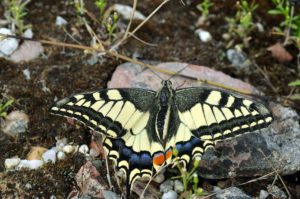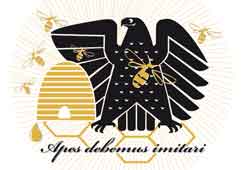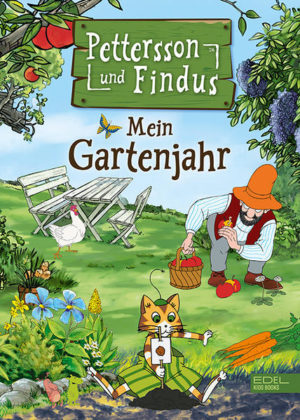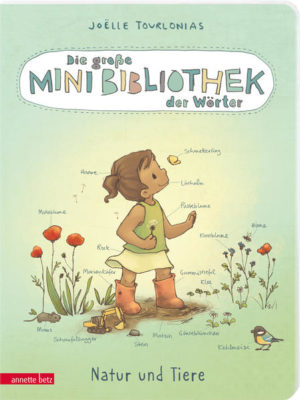- Buch: 246 Seiten
- Verlag: Laurenti
- Autor: Joseph N Laurenti
- Auflage: 1. Aufl., erschienen am 01.06.2005
- ISBN-10: 3-933066-24-7
- ISBN-13: 978-3-933066-24-4
- Größe und/oder Gewicht: 21,0 x 15,0 cm
Specimen Medicum, Exhibens Synopsin Reptilium Emendatam cum Experimentis Circa Venena et Antidota Reptilium Austriacorum
Autoren: Joseph N. Laurenti30,00 €

HONIGHÄUSCHEN (BONN) – In modern biology and medecine, particularly when molecular genetics is involved, the results of current research have an extremely short half-life period, i. e. they get increasingly rapidly out of date. This was to some degree certainly also true already for the experimental medical and physiological aspects of Josephus Nicolaus Laurenti’s doctoral dissertation in 1768 which was fully entitled Specimen medicum, exhibens synopsin reptilium emendatam cum experimentis circa venena et antidota reptilium austri-acorum. I am pretty sure that the medical importance of this work was rather shortly out of date also at that time, and the reader today might feel happy about the modern standards of medecine, including treatments of envenomations caused by reptile spe-cies (although in the former Austrian empire as well as in today Austria Vipera ammo-dytes would be the only harmful member of this group). One must, however, recall that in the second half of the 18th century the knowl-edge about animals and their biology was in many aspects still rudimentary. A famous Natural history which appeared 10 years after Laurenti’s work still grouped arma-dillos with tortoises and not with mammals, and 70 years after Laurenti, the famous father of hormonal research, Adolph Arnold Berthold started experiments on the ability of amphibians to survive in 37 °C warm water without air-breathing possibility, in order to find out whether the numerous reports of that time on living amphibians coming out of the stomachs and mouths of humans (particularly of young women) were compatible with experimental results: Ueber den Aufenthalt lebender Am-phibien im Menschen. 1849). It is important to note that this level of serious re-search is just 150 years ago! So, it is obviously not the meaning of Laurenti’s Specimen medicum“ itself which at-tracts a broad, general interest today (i. e. an interest exceeding pure historical as-pects). Rather, it is the aspect of his Synopsis reptilium which means the first, non-medical part of his work, the zoological classification of the reptiles (i. e. including modern amphibians) known to him at that time. This classification stands in the tradi-tion of the pioneer of biological classifaction and nomenclature, Carolus Linnaeus, whose 10th edition of his famous Systema Naturae (1758) is still marking the year zero for modern biosystematics. But in contrast to Linnaeus, Laurenti distinguished already 30 different genera, and of his seven newly described amphibian and twelve reptiles species from circum Viennam, seven respectively six taxa are still consid-ered valid today. And it is just this last aspect of systematic validity of described taxa that makes the old classic works in zoology (or herpetology, as Laurenti’s book dealt with here) so long-living. Any systematist in herpetology has to deal with any available name relevant for his group under study before he may think about the creation of new names. That’s why a 250 years old reference is still unrenouncable for current re-search. It is therefore most meritious of Burkhard Thiesmeier to undertake the risk of reprinting this classical work, the more as his Publishing House received its name from the important old researcher. And it is pleasing for me that just the original copy of the herpetological library of Museum Koenig in Bonn could be used to produce the present facsimile reprint. However, one problem complicates things. Latin, the international scientific lan-guage of Laurenti’s time which he naturally used also for his dissertation, is regarded today a dead language and consequently becoming more and more extinct among students. Due to this circumstance one may regret it or not Burkhard Thiesmeier decided to publish a bilingual edition, the Latin original being opposed page by page by an English translation. The Latin translation was prepared by his friend and col-league Sergius Kuzmin who is well known and reputed also for historical herpetologi-cal topics. To make it even a bit more complicated, Kuzmin first translated the Latin original into Russian and then re-translated the latter into English. But these efforts were actually worth while. Publisher and translator may be proud to present the fac-simile reprint of an old, classical work to the scientific public which they make thus available again. And because of the simultaneous translation into English, they make it at the same time also accessible. I am sure this will be highly appreciated by a large number of readers who will also like to own this important work. Bonn, February 2005 Prof. Dr. Wolfgang Böhme
Über „Specimen Medicum, Exhibens Synopsin Reptilium Emendatam cum Experimentis Circa Venena et Antidota Reptilium Austriacorum“
Das vorliegende Sachbuch zu Themen aus Umwelt und Natur „Specimen Medicum, Exhibens Synopsin Reptilium Emendatam cum Experimentis Circa Venena et Antidota Reptilium Austriacorum“ wurde erarbeitet und verfasst von Joseph N Laurenti. Dieses Sachbuch erschien am 01.06.2005 und wurde herausgegeben von Laurenti.
Bücher wie „Specimen Medicum, Exhibens Synopsin Reptilium Emendatam cum Experimentis Circa Venena et Antidota Reptilium Austriacorum“ sind im Onlineshop des Honighäuschens bestellbar. Online bestellte Fachbücher zur Imkerei und zu anderen Themen der Umwelt und des Artenschutzes sind zu den üblichen Öffnungszeiten auch direkt im Buchladen Bundesamt für magische Wesen in Bonn, der Stauhauptstadt von Nordrhein-Westfalen abholbar und werden auf Wunsch verschickt.
Das Thema Bienensterben, Rückgang von Insekten und allgemeines Artensterben ist in aller Munde und das Honighäuschen als frühere Bioland Imkerei hat sich von Anfang an daran beteiligt. Mehr als 35 Jahre Imkereierfahrung nahmen ihren Anfang 1982 mit den ersten eigenen Bienen.

Der zehnjährige Junge, der 1977 einem Hamburger Imker über die Schulter schaute; der Fünfzehnjährige, der mit der Imkerei in Zeiten begann, in denen es noch keine Varroamilbe gab; der achtzehnjährige Fahrschüler, der lernte, dass man die Windschutzsscheibe seines Autos nach einer längeren Fahrt von Insekten säubern muß; der zwanzigjährige Student, der für seine Bienen einen Platz in Bonn suchte; der dreißigjährige Berufsimker, der seinen Bienen quasi eine Gutenachtgeschichte erzählte und sich den Kopf zerbrach, wie man die Umwelt mit ihren Bienen, Wespen, Schmetterlingen und andere blütenbesuchenden Insekten vor den Machenschaften der Agrargiftindustrie und der Gleichgültigkeit agrarindustriehöriger Politiker schützt; der Imker, der nicht nur auf dem Weihnachtsmarkt Bonn die Öffentlichkeit suchte, um bei Führungen an den Bienen auf dem Dach der Bundeskunsthalle zu erleben, dass Kinder (und deren Helikoptermuttis!) Angst vor Schmetterlingen hatten, bis hin zum Begleiter von Forschungsprojekten zu den Riesenhonigbienen Nepals oder den Killerbienen Afrikas, stellt fest, dass etwas sehr im Argen liegt in unserem Umgang mit der Umwelt.
Es sollte jedem bewußt sein, dass die Haltung „Natur ja, aber bitte woanders!“ nicht in Ordnung ist.
Die wunderschöne Welt der Natur

In unserem Online-Buchshop finden Sie viele Bücher wie „Specimen Medicum, Exhibens Synopsin Reptilium Emendatam cum Experimentis Circa Venena et Antidota Reptilium Austriacorum“, die Ihnen die fantastische Welt der Bienen, Wespen, Ameisen, Hornissen und Schmetterlinge sowie anderer Insekten näherbringen.
Aber nach wie vor stehe ich Ihnen auch gern zu einem Gespräch oder zu einer Beratung im Umgang mit Bienen, Wespen, Hornisse, Wildbienen und Hummeln zur Verfügung, wenn Sie Fragen haben. Besuchen Sie uns in Bonn im Bundesamt für magische Wesen.
Und natürlich gibt es auch weiterhin Honig, Bienenwachskerzen und Met bei uns und zwar das ganze Jahr – nicht nur zu Weihnachten.
| Größe | 21 × 15 cm |
|---|





Bewertungen
Es gibt noch keine Rezensionen